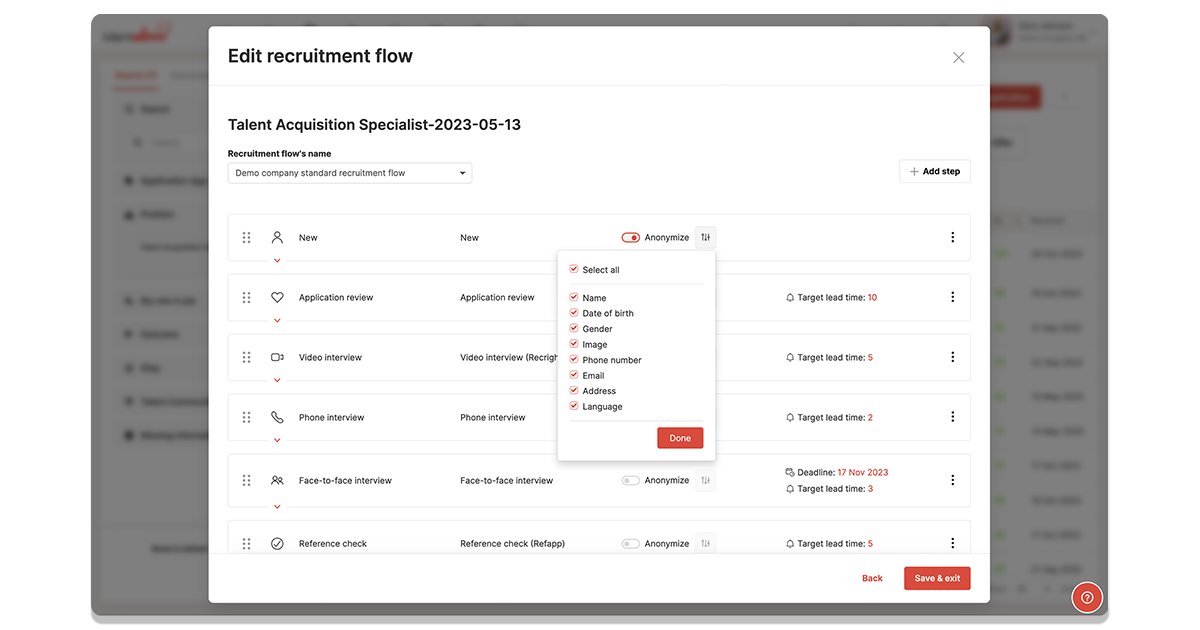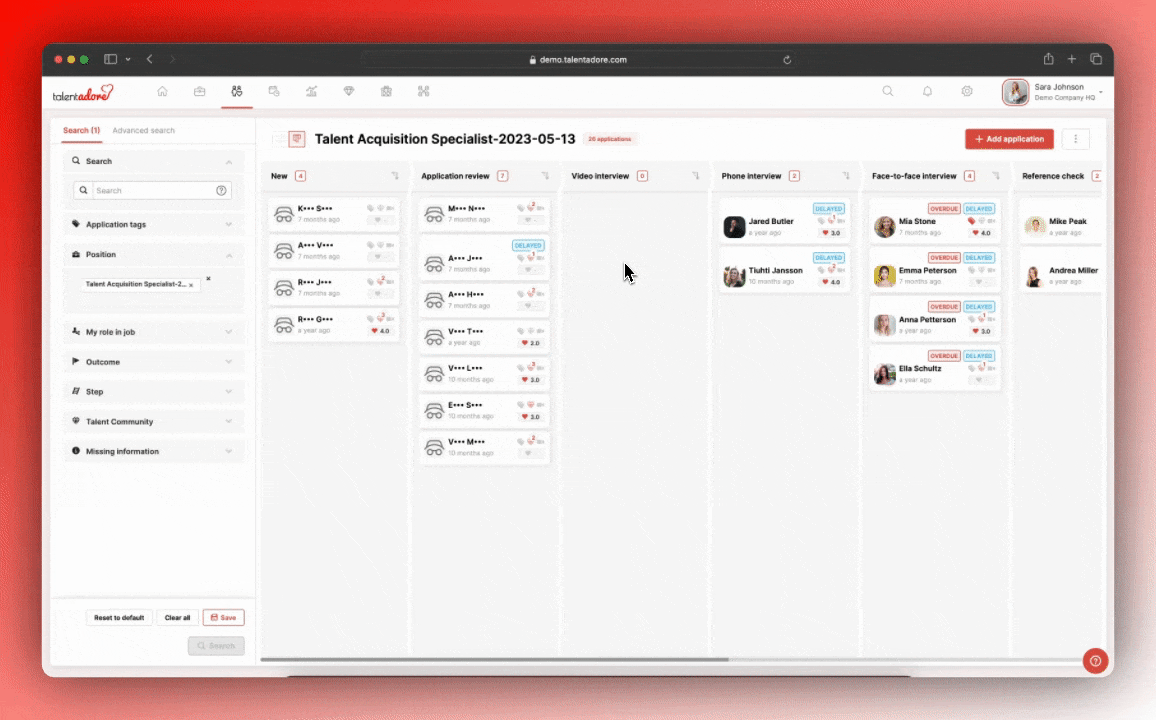Miira Leinonen
CMO
Passionate about creating compelling stories and enhancing the world of recruitment. Helping companies to improve their Employer Brand with modern recruitment methods and superior Candidate Experience.

HR Tech
In the quest for more inclusive hiring practices, the spotlight has turned to anonymous recruitment, often called blind hiring. But what exactly is blind hiring, and how does it function?
Research has found 48% of HR managers admit bias affects which candidates they hire (Forbes).
Biases pose significant challenges for organizations, but anonymous recruitment offers a promising solution. Therefore, in this post, we will go through
Join us to uncover the inner workings of blind hiring and its impact on modern recruitment practices! 👇
Anonymous recruitment, also known as blind hiring, is a method of recruiting where the personal information of candidates such as their name, gender, age, race, and other identifying details are concealed from employers during the initial stages of the hiring process.
The idea behind anonymous recruitment is to minimize bias and discrimination in hiring by focusing solely on the qualifications, skills, and experience of the candidates. This approach aims to create a fairer and more inclusive hiring process by removing potential unconscious biases that may influence decision-making. 👐
By removing personal information from the equation, employers are forced to evaluate candidates based on their merit alone. This can lead to a more diverse and talented pool of candidates being considered for positions, ultimately resulting in a more effective and successful recruitment process. Overall, anonymous recruitment has the potential to revolutionize the way companies approach hiring and create a more equitable and inclusive work environment for all.
Is blind hiring for everybody? Not necessarily. Arguments exist both in favor and against anonymous recruitment. Thus, in the next chapters, we will go through both sides.
Blind hiring should be considered when a company is interested in trying new methods to promote diversity, equity, and inclusion within its workforce. ❤️ Here are some key reasons and situations when blind hiring can be beneficial:
Blind hiring can help to minimize unconscious bias by removing demographic information from initial candidate assessments. This ensures that decisions are based solely on qualifications, skills, and experience, rather than factors like name, gender, or ethnicity.
Blind hiring is particularly useful in roles where unconscious bias may have a significant impact, such as leadership positions or industries where certain demographics are underrepresented.
By focusing on merit rather than demographics, blind hiring encourages the consideration of candidates from diverse backgrounds who may have been overlooked in traditional recruitment processes. This can lead to a more diverse and representative workforce.
A diverse workforce fosters innovation and creativity by bringing together varied perspectives and experiences. Blind hiring helps ensure that diverse talent has a fair chance of being considered.
Racially diverse companies are 35% more likely to have higher financial returns, and companies with high gender diversity are 15% more likely to outperform. (Eli inc)
Blind hiring allows organizations to tap into a wider talent pool by attracting candidates who might have been discouraged from applying because of concerns about bias or discrimination.
Companies that embrace blind hiring demonstrate a commitment to fairness and inclusivity, which can enhance their reputation as an employer of choice for a diverse range of candidates.
Blind hiring can help organizations comply with anti-discrimination laws and regulations, reducing the risk of legal challenges related to bias in hiring practices.
One of the main critiques is that anonymous recruitment may only address surface-level biases while neglecting deeper systemic biases embedded in the hiring process, such as discriminatory job requirements or biased interview questions. 🧐
Additionally, critics argue that anonymous recruitment can be challenging to implement effectively. Ensuring complete anonymity throughout the process can be difficult, and there’s always the risk of bias creeping in at later stages of the hiring process, such as during interviews or through subconscious cues.
To tackle the potential issues, it is good to keep in mind that anonymous recruitment is only one of the several methods to decrease biases, and rarely only one method works on its own.
While using anonymous recruitment, it is important to educate the recruiters and hiring managers about inclusive hiring practices. This should include training the employees for job interviews and helping them to write more gender-neutral job descriptions. Also, it is useful to regularly review recruitment data to identify any patterns of bias or disparities in the hiring process.
To enable blind hiring, you need a modern applicant tracking system that allows you to hire anonymously. TalentAdore Hire is one example of a great solution that makes anonymous recruitment easy for you. Next, we will explain how it works in practice.
With TalentAdore Hire, anonymous recruitment can be applied for all your recruitments or selected ones. This means you can choose which recruitment process steps are anonymized and also which information is anonymous. For example, the candidate’s name, email, or other identifiable information can be masked.
Step 1: When editing the recruitment flow, you can enable the anonymisation for the respective step by simply flicking the toggle.
Step 2: If you want to further customize the level of anonymisation, you can click on the button next to the toggle. Select the personal data you want to hide from the application details for that step.

Step 3: See an example of a candidate’s profile below! Here the name, email address, and photo of a job candidate are masked. Our AI Assistant assures that all summaries of attached documents remain anonymous as well.
 When you move a candidate to a step that isn’t anonymized, all the information will be made available.
When you move a candidate to a step that isn’t anonymized, all the information will be made available.

👉 Interested in learning more about TalentAdore Hire and how we can help you with anonymous recruitment? Contact us or book a meeting with one of our experts.
Anonymous recruitment, also known as blind hiring, offers a promising solution to minimize bias and discrimination in the hiring process. By concealing personal information and focusing solely on qualifications and experience, blind hiring aims to create a fairer and more inclusive recruitment process. It can help organizations reduce unconscious bias, promote diversity and creativity, improve the quality of the talent pool, enhance their employer brand, and ensure compliance with anti-discrimination laws.
While anonymous recruitment is not without its criticisms, it is essential to combine it with other inclusive hiring practices and regularly review recruitment data to address any potential biases effectively.
Implementing recruitment software like TalentAdore Hire can streamline the anonymous recruitment process, making it easier for companies to adopt this method and create a more equitable and diverse workforce. Ultimately, embracing anonymous recruitment can lead to better hiring decisions, attract high-quality job applications, and foster a more skilled and talented workforce.